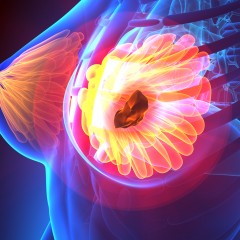More Cancer Patients Treated with Personalized Therapies Before Surgery
 Breast, bladder, and pancreatic cancers are increasingly being treated with a broad range of therapies before a patient undergoes surgery, and cancer stage at diagnosis continues to be a leading factor in determining a person’s survival rate for all types of cancer. The findings, according to the first-ever annual cancer report from the National Cancer Database (NCDB) of the American College of Surgeons (ACS) Cancer Programs, were published in the Journal of the American College of Surgeons (JACS).
Breast, bladder, and pancreatic cancers are increasingly being treated with a broad range of therapies before a patient undergoes surgery, and cancer stage at diagnosis continues to be a leading factor in determining a person’s survival rate for all types of cancer. The findings, according to the first-ever annual cancer report from the National Cancer Database (NCDB) of the American College of Surgeons (ACS) Cancer Programs, were published in the Journal of the American College of Surgeons (JACS).
The NCDB, a clinical oncology database jointly operated by the ACS and the American Cancer Society, captures hospital-based data on approximately 74% of all cancers diagnosed in the US and is one of the most comprehensive cancer research databases.
“This report is our approach to making NCDB data more broadly available to others who may benefit from understanding this large source of cancer data and what it’s telling us about the current state of cancer diagnoses and treatments in the United States,” said first author Elizabeth B. Habermann, MPH, PhD, chair of the ACS Cancer Data Modeling Committee and a professor of health services research at Mayo Clinic in Rochester, Minnesota.
The report summarizes new observations and recent trends in cancer diagnoses, and includes many details not usually included in other cancer reports, the authors said. Some unique metrics tracked in NCDB data include length of stay, hospital readmission rates, and hospital type (such as a community or academic institution). These metrics help hospitals assess quality of care and inform treatment options for the growing number of cancer patients nationwide, the authors added.
The report focuses on 2021, the most recently available data from the NCDB at the time, and overall trends in cancer from 2004-2021.
The use of neoadjuvant systemic therapy, which is usually given to patients before surgery or other primary cancer treatment, has increased for breast, urinary bladder, and pancreatic cancers, though it remains low for other cancers. Systemic therapies encompass a broad range of treatment options, including hormone therapy, immunotherapy, and chemotherapy, designed to reach cells throughout the body to hopefully shrink an existing tumor and prevent further spread. According to the report, the use of neoadjuvant systemic therapy, particularly hormone therapy, for breast cancer increased from 11% in 2010 to 18% in 2021 at Commission on Cancer (CoC) accredited sites. Substantial increases for neoadjuvant systematic therapy were also noted for pancreatic (224% increase) and urinary bladder (102% increase) cancers since 2010.
Although there was a slight decrease in the use of systemic neoadjuvant therapy in 2021 in some cancers due to the pandemic, the authors said these trends show a sustained increase in the use of neoadjuvant systemic therapy for certain cancers.
“One of the goals of neoadjuvant systemic therapy is to treat the cancer beforehand to hopefully decrease the size of the tumor and/or the lymph node involvement so that a less extensive surgery can be performed,” said Judy C. Boughey, MD, FACS, senior author of the JACS study and chair of the ACS Cancer Research Program.
Dr Boughey, who also serves as division chair of breast and melanoma surgical oncology at Mayo Clinic in Rochester, Minnesota, added that neoadjuvant systemic therapy may also inform recommendations regarding other cancer therapies after surgery based on how a patient’s tumor responds to the treatment received.
Across all cancers, patients with earlier-stage (pre-cancers or stage I-II) cancers had the best outcomes and 5-year survival rate. Although not a new finding, the authors said this finding confirms that screening and early diagnosis continue to be essential factors for patients who are diagnosed with cancer.
Overall five-year survival rate for all types of cancer in 2021 was 64%. When stratified by sex, women had a markedly better 5-year overall survival rate (68%) compared to men (59%) across all types of cancer analyzed in the report.